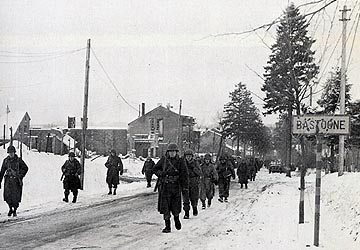Concrete defense structure Devèze line Fortin Bogges
Near this small concrete defense structure, the 4th Armored Division and the 101th Airborne Division made contact. This marked the end of the siege of Bastogne, on Tuesday, December 26, 1944.
Between 1933 and 1935, about 300 to 400 of these small concrete defense structures were built on the eastern border of Belgium. The advanced position they formed was named after its initiator, the then Belgian Minister of National Defense Albert Devèze. The defenses north of the Amblève were connected to the Fortified Position of Liège and those south of the Amblève were to be manned by the Ardennes Hunters.
In this advanced position, resistance had to be offered in such a way that the French ally could come to the aid of Belgium in time. After the end of Albert Devèze's term, Belgium opted for neutrality and the construction of alert posts directly on the eastern border (Eastern Border Alert Posts of Belgium). Most of the concrete defenses of the Devèze line were therefore unoccupied in May 1940.
In general, the concrete defenses of the Devèze line are standardized in four variants. They consist of one room measuring 3.25 by 3.30 meters and a wall thickness of 40 to 60 centimeters. They are manned by 3 to 4 troops with a (light) machine gun as main armament. The single loophole is equipped with a steel protective plate that, together with the four ventilation grilles, forms a clearly recognizable appearance.
Do you have more information about this location? Inform us!
Source
- Text: Jeroen Koppes en Barry van Veen
- Photos: Jeroen Koppes
Related videos
Nearby
Museum
- 101st Airborne Museum Le Mess - Bastogne
- Bastogne Barracks (Headquarter Gen. McAuliffe) - Bastogne
- Bastogne War Rooms - Bastogne
Point of interest
- Trail of Remembrance Fortin Bogges - Bastogne
- Patton's Route Markers Fortin Bogges - Bastogne
- Sherman Turret Direction Assenois - Bastogne
Monument
- Memorial Ernest Glessener - Bastogne
- Battlefield Marker Villeroux - Villeroux (Vaux-sur-Sûre)
- Battlefield Marker Remoifosse - Bastogne
Cemetery
- Belgian War Grave Bastogne - Bastogne
- Belgian Graves Veterans Hompré - Hompré (Vaux-sur-Sûre)
- Belgian War Grave Hompré - Hompré (Vaux-sur-Sûre)





